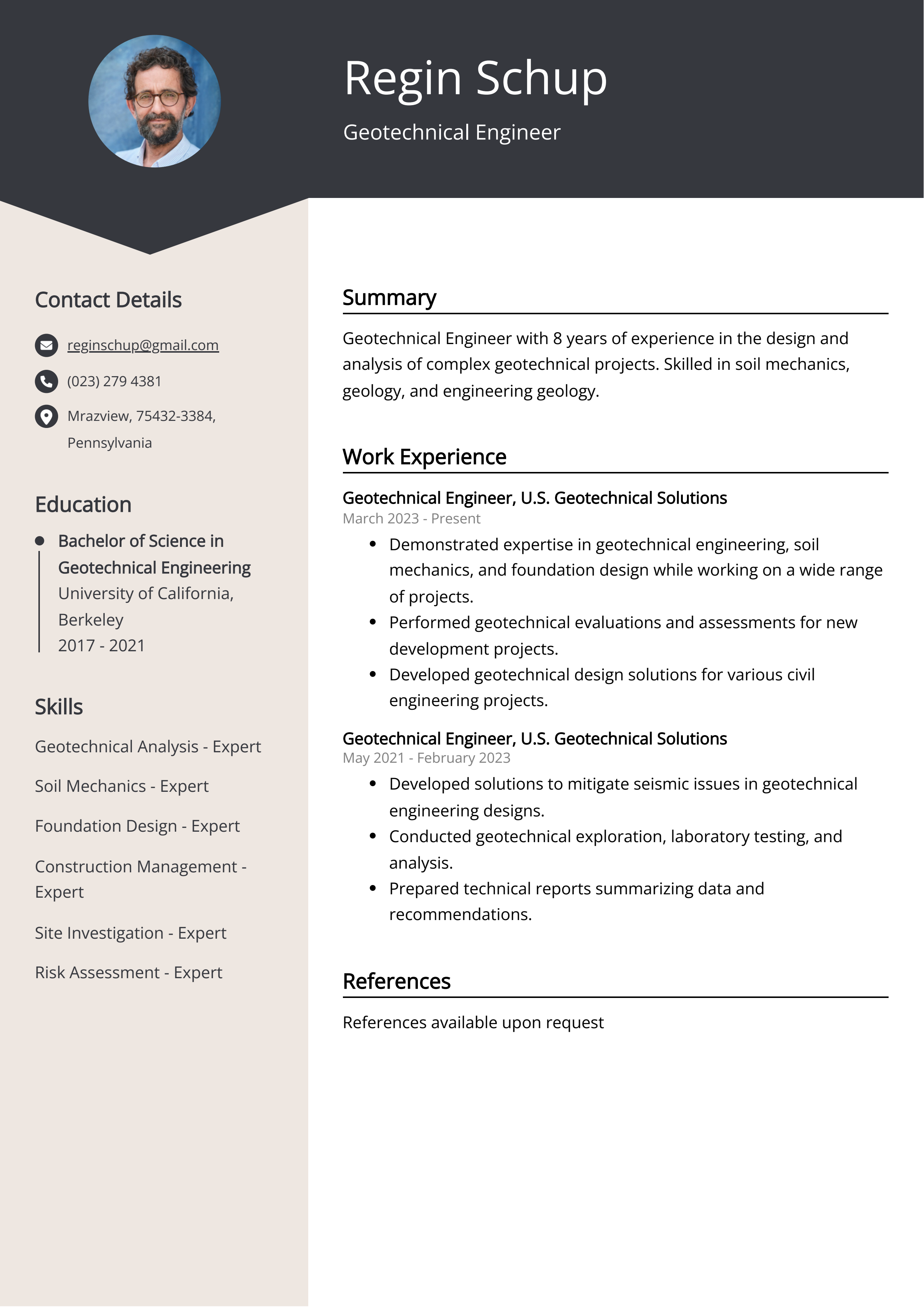A Biased View of Geotheta
A Biased View of Geotheta
Blog Article
The Single Strategy To Use For Geotheta
Table of ContentsGetting My Geotheta To WorkThe Greatest Guide To GeothetaSome Ideas on Geotheta You Need To KnowNot known Details About Geotheta Our Geotheta Ideas

They perform site investigations, accumulate examples, execute research laboratory tests, and evaluate data to examine the suitability of the ground for construction projects - Geo Tech Engineer. Based on their searchings for, geotechnical designers supply recommendations for foundation style, incline stability, preserving frameworks, and reduction of geotechnical threats. They team up with various other specialists, such as designers, structural engineers, and construction teams, to guarantee that geotechnical factors to consider are integrated into the overall project style and implementation
By evaluating the behavior and properties of soil and rock, they can recognize prospective geotechnical risks such as landslides, dirt negotiation, or incline instability. Their competence helps protect against failings or mishaps that can endanger lives and residential or commercial property. Right here are some comprehensive obligations and responsibilities of a geotechnical engineer: Site Examination: Geotechnical designers conduct site examinations to gather information on subsurface problems.
They interpret the data to recognize the residential properties and actions of the dirt and rock, including their stamina, permeability, compaction characteristics, and groundwater conditions. Geotechnical Analysis and Design: Geotechnical designers assess the information collected throughout website investigations to examine the stability and viability of the website for building tasks. They carry out geotechnical estimations and modeling to review elements such as bearing capability, settlement, slope stability, side planet stress, and groundwater flow.
The Facts About Geotheta Uncovered
Foundation Design: Geotechnical designers play an important duty in making foundations that can securely support the intended structure. They analyze the soil conditions and tons needs to figure out the appropriate foundation kind, such as shallow foundations (e.g., footings), deep foundations (e.g (https://penzu.com/p/952dfde2dba9ee4f)., heaps), or specialized methods like soil renovation. They consider factors such as negotiation restrictions, birthing ability, and soil-structure communication to create optimum foundation designs
They review building and construction strategies, display website activities, and carry out field assessments to confirm that the layout recommendations are followed. If unforeseen geotechnical issues emerge, they assess the circumstance and offer recommendations for remediation or changes to the style. Risk Evaluation and Mitigation: Geotechnical engineers assess geotechnical threats and dangers related to the task website, such as landslides, liquefaction, or dirt disintegration.

Cooperation and Communication: Geotechnical engineers work carefully with other specialists involved in a job, such as designers, structural engineers, and construction groups. Efficient communication and collaboration are important to integrate geotechnical factors to consider into the general job design and construction procedure. Geotechnical designers offer technical proficiency, response inquiries, and make certain that geotechnical demands are met.
All about Geotheta
Right here are some kinds of geotechnical engineers: Foundation Designer: Structure designers focus on creating and analyzing structures for frameworks. They examine the dirt conditions, tons demands, and site features to determine one of the most proper structure type and layout, such as superficial foundations, deep foundations, or specialized strategies like stack structures.
They examine the elements influencing slope security, such as dirt homes, groundwater conditions, and incline geometry, and establish methods to stop slope failures and alleviate threats. Earthquake Designer: Earthquake engineers concentrate on assessing and making structures to withstand seismic forces. They evaluate the seismic danger of a site, review soil liquefaction possibility, and establish seismic layout standards to make sure the safety and security and resilience of structures during earthquakes.
They carry out area testing, collect samples, and analyze the gathered information to characterize the dirt buildings, geologic formations, and groundwater problems at a site. Geotechnical Instrumentation Designer: Geotechnical instrumentation designers concentrate on surveillance and gauging the actions of soil, rock, and structures. They install and preserve instrumentation systems that monitor factors such as soil settlement, groundwater levels, slope activities, and architectural variations to assess efficiency and offer very early warnings of prospective concerns.
The Basic Principles Of Geotheta
They carry out examinations such as triaxial examinations, loan consolidation tests, straight shear examinations, and leaks in the structure examinations to collect information for geotechnical evaluation and design. Geosynthetics Designer: Geosynthetics designers concentrate on the layout and application of geosynthetic materials, such as geotextiles, geogrids, and geomembranes. They utilize these materials to improve dirt stability, enhance slopes, provide water drainage solutions, and control disintegration.
They have a tendency to be investigative people, which Continued suggests they're intellectual, introspective, and inquisitive. They are interested, systematic, sensible, logical, and logical. Some of them are also social, indicating they're kind, generous, cooperative, person, caring, practical, understanding, tactful, and friendly - Consulting Engineer.
In the workplace environment, geotechnical engineers use specialized software program tools to do calculations, create styles, and examine data. They prepare records, testimonial task specs, communicate with clients and group participants, and coordinate project tasks. The workplace setup provides a conducive setting for study, analysis, and partnership with other professionals associated with the job.
The Main Principles Of Geotheta
They frequently check out project sites to conduct site examinations, examine geotechnical conditions, and collect data for evaluation. These brows through include traveling to different locations, sometimes in remote or challenging terrains. Geotechnical designers might carry out dirt sampling, conduct tests, and screen building activities to guarantee that the geotechnical aspects of the project are being carried out appropriately.
Geotechnical designers additionally function in specialized geotechnical laboratories. Geotechnical research laboratory designers work extensively in these atmospheres, dealing with screening tools, running tools, and tape-recording data.
Report this page